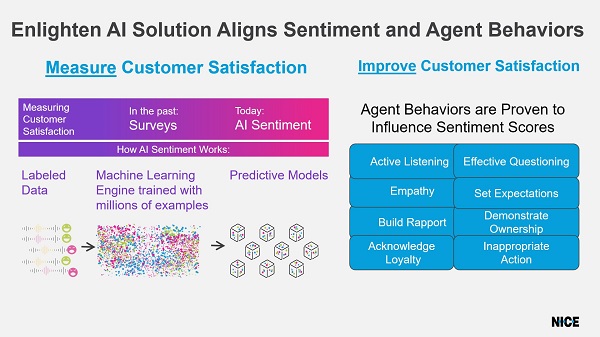From a technology perspective, the pandemic accelerated existing trends in remote work, e-commerce, and automation, all of which have major implications for those who work in and manage contact center operations. In a webinar last week, Lauren Maschio, manager, product marketing team at NICE, and I took on the specific issues facing contact center leaders as they address the future-of-work issue.
An important aspect of the future of work is attracting and retaining talent. Given the typically high turnover in contact centers, working from home brought new challenges to both of these nonstop activities.
It appears clear that attracting contact center talent in the post-pandemic world is going to include more working at home. The pandemic served as a trial by fire of sorts for work from home and many businesses found they were able to support customers and manage agents better than they often imagined would be possible.
While technologies to support work from home have been available for decades, those early alternatives often were expensive and technically complex. Cloud contact center software delivered through a browser-based agent desktop — when paired with adequate home Internet speed — removed most of the earlier cost and complication of setting up agents to work from home.
During the NICE webinar, I highlighted a concept gleaned from the
work of
Blake Morgan, customer experience futurist. She explained that pressure is on agents to show up for every single customer and companies can't manage change in a world out of our control. Instead of thinking in terms of change
management, she promotes the notion of change
enablement — that is, enabling agents to show up and be their best selves at work.
How agents are coached is key to enabling agents to improve their skills over time. Maschio described two ways artificial intelligence is being used to automate agent quality management programs. As seen in the graphic, one component is creating a customer satisfaction (CSAT) score for every interaction. Typically done with surveys, response rates by consumers are often quite low. Using AI, NICE has built a predictive model that produces a reliable customer sentiment measurement on every interaction without relying on surveys.
The graphic further shows that NICE began with labeled data — e.g., interactions with known CSAT scores. They then used a machine learning engine to further train the model using data from millions of individual interactions from dozens of clients across numerous industries. The output is a numeric score on every interaction. This gives a reliable predictive indicator, a proxy, for a survey response.
Once a company can reliably measure CSAT on every call with a sentiment score, the next step is to understand how changing agent behaviors can improve CSAT. For this, NICE built a set of models that help us understand the behaviors that actually lead to better outcomes.
Seen in the graphic above, soft skills like listening actively, building rapport, taking ownership, and demonstrating empathy have been shown to influence CSAT scores. However, it can be difficult, if not impossible, to define and measure these verbal attributes of agents using human reviewers. In fact, multiple people reviewing the same interaction will likely not agree about how well an individual scored on each of these soft skills.
Automating the task, however, using trained models, allows a company to generate a metric for every one of the behaviors, on every single interaction, for every single agent, without human involvement. Building models can be the toughest challenge in deploying AI. Models for the agent behaviors shown in the graphic are available from NICE out of the box.
During the webinar, Maschio discussed two customers —
Verizon Connect and
Spectrum Enterprise — that spoke at the recent NICE
Interactions event about how they are using AI-enabled quality management automation to engage agents with targeted coaching and self-learning tools. “A common theme discussed by the two companies was moving from a ‘checklist’ quality program — e.g., an agent said this or didn't do that — to a behavior-based quality program, automatically evaluating 100% of interactions,” she said. The results for an automated quality management program included the ability to highlight qualitative behaviors for agents that support business success.
Returning to the thesis of enabling versus managing agents, the tools discussed here are great proof points that AI in the contact center is not all about chatbots or automation. It is also about helping agents develop their skills not only provide to better service but also to be more engaged in their jobs.
Learn more about the role of AI in the contact center at Enterprise Connect this September in Orlando, Fla. Use the promo code NJAL200 to receive $200 off your registration.











